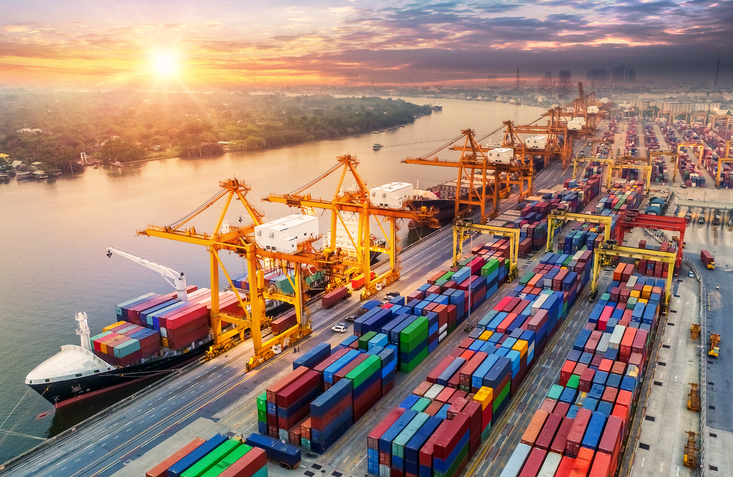Logistics providers, and the companies that rely on their services, must contend with constantly changing conditions. Gathering and analyzing empirical data can help make all the difference, rendering the unpredictable at least a little bit predictable. Gaining transparency, then, holds the key to building resilience.
The COVID-19 pandemic brought supply chains around the world to their knees. As freight lines became extra-volatile, companies that rely on a steady inbound flow of raw materials found themselves unable to turn around goods, and outbound shipments were likewise unreliable.
Supply chain executives learned many lessons during this time, perhaps none more important than the need for resilience. A study conducted by Capgemini Research Institute revealed that increasing resilience was a top priority for 62% of supply chain executives surveyed.
Initiatives such as reshoring, AI-driven contingency projections and the integration of IoT devices throughout the supply chain, meanwhile, can help increase resilience. Whatever tactics you use, though, the key to unlocking supply chain resilience always comes down to one principle: visibility.
A fully transparent supply chain allows everyone involved to make better decisions and improve their workflows, on both macro and micro levels. Here are three advantages that end-to-end visibility brings to supply chains.
Improved customer experience
Shipment tracking has always been present in the logistics industry in some form. Giving customers access to a platform where they can not only track the location of a shipment, but also the condition their goods are in, will improve customer satisfaction.
When shipping an item, consumers always fear that their package will sustain damage, since condition-related data is typically a black box. Such a state of affairs is unacceptable when transporting perishable goods such as food or condition-reliant goods such as medicines or precision electronics.
For instance, some medicines such as insulin have to be stored in tight temperature ranges, or else they're unusable. The COVID-19 vaccines are also a similar case. Giving customers insight into the temperature their goods are stored in, the humidity levels, and light creates a transparent user environment.
Supply chains are an intricate collection of processes and vendors. As a result, miscommunication can occur, especially in the case of internal shipments. Giving buyers insight into condition-related data prevents this from occurring. Any miscommunication regarding ideal condition storage will be spotted by the customer, and shippers can work to quickly mitigate any risks.
Customers these days are used to receiving analytics in all the applications they use, and shipment tracking should be no different. Increased customer satisfaction leads to greater confidence and loyalty towards a shipper.
Risk mitigation and loss prevention
Waste reduction is one of supply chain executives' top priorities. According to the Economist's Intelligence Unit and the BCFN Foundation, the United States wastes approximately 95 kilos worth of food per person, every year. Around 40% of this waste comes from supply chain issues.
As a result, food supply isn't sustainable in a world that is becoming more conscious of waste reduction. End-to-end supply chain visibility can reduce the chances of shipment losses and allow shippers to react quickly to faulty transportation conditions.
Data loggers attached to shipments can transmit condition-related data to powerful analytics platforms in the cloud. Thus, providing access to customers and a wide range of users need not be so complicated. Logistics providers can create thresholds that alert users when violated.
For instance, a shipment of food transported by road in a truck might encounter issues with its cold chain system. In this scenario, data loggers attached to the shipment will register temperature spikes that might damage the goods.
The analytics system will alert logistics company employees or the driver of these violations, and the issue can be addressed. Other condition-related violations such as excessive shock and humidity can also tip shipments into less than ideal states. By monitoring all these data points and providing multiple users access to them, all stakeholders in the supply chain can work to reduce waste.
Last-mile deliveries are a significant challenge for most service providers due to changing conditions and infrastructure issues. For instance, last-mile delivery vans might not be equipped with adequate cold chain storage facilities.
By recording condition-related data trends from different vendors, logistics providers can partner with those who perform the best and mitigate possible goods damages in the last mile.
Better demand planning
Manufacturers sit at the top of the supply chain and rely on their downstream partners to deliver their goods to consumers on time. Consumer buying patterns change all the time, and this makes production planning a challenging task.
Seasonality in consumer purchasing trends helps manufacturers anticipate demand spikes. However, marketing and business concerns have to be factored into production schedules as well. For example, before launching a special promotion, manufacturing departments have to ensure there's enough product for consumers on store shelves.
To ensure successful production, manufacturers must rely on a wide variety of logistics data. Vendor performance, as measured by the condition in which they delivered raw material, storage capacity, and inventory management are critical.
For instance, vendors might deliver raw material on time, and manufacturers can produce goods efficiently. However, if finished goods cannot be stored in ideal conditions before being shipped, the effort is for naught.
By having visibility into condition-related data into every step of the manufacturing process, accurate demand schedules can be easily created and potential losses avoided.
More visible and sustainable
Visibility is the key to building sustainable supply chains. As consumers become increasingly conscious of the origin and manufacturing conditions of their goods, supply chain stakeholders have to work to demystify delivery processes.
Tracking condition-related data is a great step, but access to it has to be opened to everyone in the supply chain for it to achieve its full potential.











